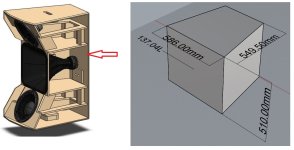The goal is to have the full frequency range, or nearly so (say, to 40Hz), be phase coherent with the rest of the mids/highs. Flown mains with subs on the ground can't do this. The goal is to have a single acoustic origin, or as close as possible, flat (no haystack) to 40-ish Hz, and then extra subs for the 20+Hz haystack.Why would this type of cab be preferable to using ground stacked sub/s benefiting from ground coupling run to ~100 Hz, and tops taking over from there? Would you not gain about 6 dB (or 3?) of free bass that way effectively needing half the volume of subs for equal output? Ty for any answer on this!
It helps to think in terms of 'natural bass' vs 'effect bass'. Rock and roll kick drum and EDM is largely an effect; a natural sounding bass guitar is more natural, along with deep bass singers, detuned guitars, floor toms, etc.



